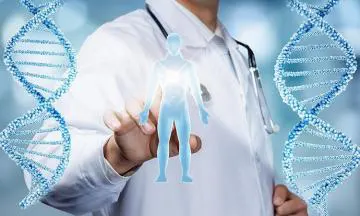

Symptoms of Diabetes Mellitus
Diabetes mellitus is a disease that affects the usage of blood sugar or glucose by your body. Glucose is vital for your health because it is an important source of energy for the cells of the body that make up your muscles and tissues. It is also an important source of fuel for your brain. If you are suffering from diabetes, no matter whatever is the type, it means you have excess sugar in your blood, which can lead to serious health problems.
Types of Diabetes Mellitus include:
Type 1 Diabetes or Juvenile-Onset Diabetes or Insulin-dependent diabetes (IDDM) is a chronic condition in which the pancreas produces little or no insulin. In this diabetes, the body’s immune system damages the beta cells in the pancreas resulting in low insulin levels. If it is left untreated, it may cause diabetic coma and death.
Type 2 Diabetes or Adult-Onset Diabetes or Non-Insulin Dependent Diabetes Mellitus (NIDDM) is a condition is which there is sufficient insulin in the blood but Diabetes occurs because the cells become desensitized due to the down-regulation of insulin receptors.
Pre-Diabetes (When the blood sugar levels are higher than normal but not very high to be classified as Diabetes).
Gestational Diabetes which occurs during pregnancy but may resolve after the baby is delivered.
Signs and Symptoms of Diabetes Mellitus
Diabetes symptoms vary depending on the level of elevated sugar in the blood. Excessive thirst, frequent urination, weight loss and excessive hunger are prominent symptoms in either types of diabetes. People suffering from Pre-diabetes or Type 2 diabetes may not experience symptoms initially. In type 1 diabetes, the symptoms could come on quickly and could rapidly become severe.
Although symptoms are common in both all types of diabetes, the symptoms of Type 2 diabetes appear more slowly than seen in Type 1 diabetes.
Increased thirst and frequent urination: When the sugar levels are elevated in the blood it pulls fluid from the tissues which increases your thirst. When you drink excessive water it leads to frequent urination. This is seen in both types of diabetes.
Increased hunger: Without enough insulin to move sugar into your cells, your muscles and organs become depleted of energy. This triggers intense hunger. This is seen in both types of Diabetes.
Unexplained Weight loss: Despite Without the ability to metabolize glucose, the body uses reserved alternative fuels stored in muscle and fat. Calories are lost as excess glucose is released in the urine. Hence this leads to weight loss. This is seen in both types of Diabetes.
Excessive Fatigue: Glucose is the main source of energy for your cell functioning. If your cells are deprived of sugar, you may become easily tired and irritable. This is seen in both types of Diabetes.
Blurred vision: If your blood sugar is too high, fluid may be pulled from the lenses of your eyes. This may affect your ability to focus and cause a blurred vision. This is seen in both types of Diabetes.
Delayed Wound Healing: Type 2 diabetes affects your ability to heal wounds and resist infections. Women in particular suffer from recurrent vaginal yeast infections (candidiasis) and fungal infections in the groin area and under the breasts. A wound which takes more time than usual to heal a wound should raise an alarm for raised blood sugar.
Acanthosis Nigricans: Some people suffering from Type 2 Diabetes may have patches of dark, velvety skin in the folds and creases of their bodies, usually in the armpits and neck. This condition is called as Acanthosis Nigricans. It is a skin condition caused due to insulin resistance. No cosmetic treatment can help this condition except correcting the insulin resistance.



